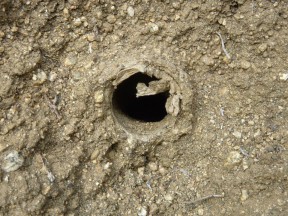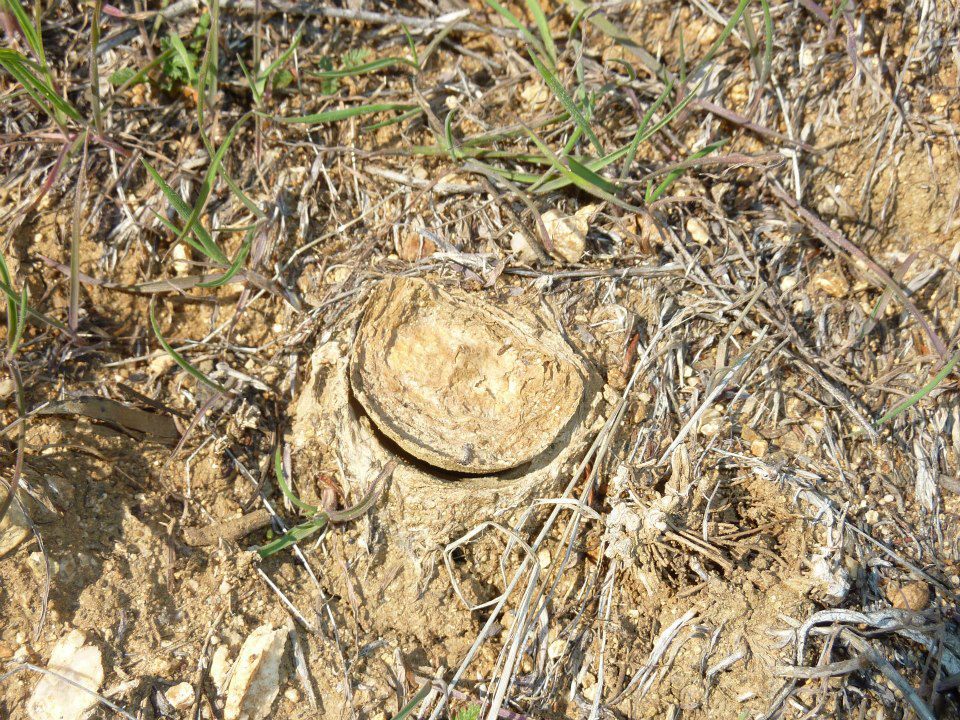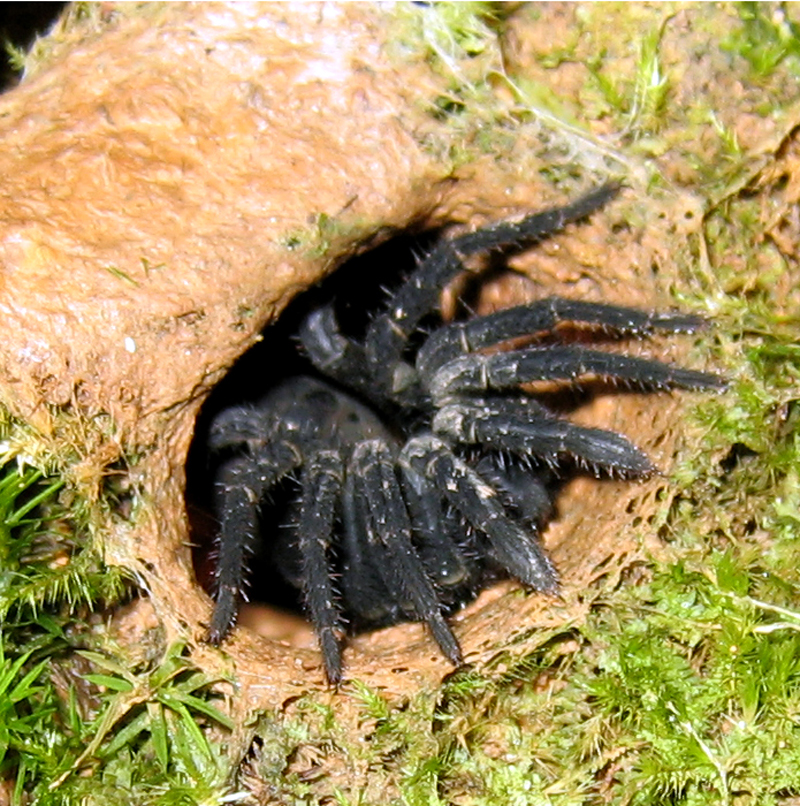 Let’s start with a little qui :
Let’s start with a little qui :
Do you think a spider always catches insects with a web attached to branches?
Do you think a spider can build a tunnel?
Do you think a spider is an insect?
Let’s start with the last question. A spider is not an insect. Insects have six legs and spiders have eight. That is an easy one to remember, and you can tell that to your friendly exterminator who wants to get rid of all insects, including spiders. Spiders belong to another list: They are arachnids.
There is one spider that can build a tunnel: the trap door spider.
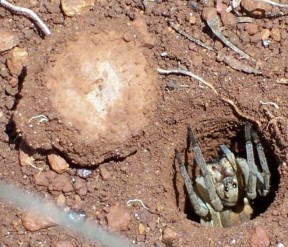 The trap door spider spins a long piece of silk and uses it to line the tunnel – so no spider web for this one.
The trap door spider spins a long piece of silk and uses it to line the tunnel – so no spider web for this one.
The trap door spider is usually nocturnal, so it is not easy to find. It looks a bit like a tarantula, but if you pay close attention, you can sometimes see the door to their tunnel.
Look in a natural area for hillside slopes which allow the water to run off quickly. Often the spider hides its door with dirt and leaves, so it is not easy to detect. But sometimes you can see a half-moon shape that you will recogni e as the outline of his door. There is a hinge on one side made out of silk to make opening and closing possible.
First it builds a tunnel. Their chelicerae have rakes (rastella) or barbs that make it possible for them to dig in the ground. They roll the soil into a ball that they throw out of the tunnel using their strong, spiny back legs. Then the tunnel is smoothed out with soil mixed up with saliva. Finally, the whole tunnel is lined with silk.
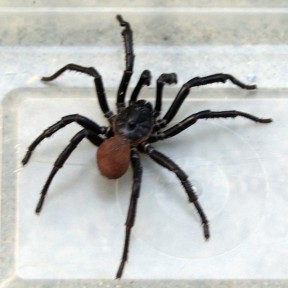 The construction of the door is different for the different species. At Placerita, I have seen only the strong, solid and thick doors that you can hardly detect. Other species make thin doors of silk and soil. Some spiders have multiple tunnels with many doors.
The construction of the door is different for the different species. At Placerita, I have seen only the strong, solid and thick doors that you can hardly detect. Other species make thin doors of silk and soil. Some spiders have multiple tunnels with many doors.
This tunnel is used for three purposes: It is a home for the spider, a nursery to raise the young, and a trap to catch food.
The trap door spider can hear the vibration from an insect passing by. They feed on large terrestrial arthropods and even small li ards.
The fine silk is a great conductor for sounds. I also read that they spin little silk lines around their burrow that act as “triplines” to hear if prey runs into them.
With the good camouflage, the door is difficult to see, so the insects do not detect anything suspicious. The spider opens the door quickly, grabs the insect and throws it down the tunnel while the door closes by itself.
If the spider is attacked, the spider keeps the door closed with its chelicerae and braces it legs against the wall of the tunnel.
I have seen somebody with a knife trying to open the door, and he had to give up, so you can imagine the strength of the spider.
The tunnel is also the nursery. The female spider lays the eggs and stays with them until they hatch. She captures food and regurgitates it to feed her spiderlings until they are 8 months old.
The mate of the trapdoor spider can come to the burrow to fertili e the female, but it is not known how she can tell the difference between his vibrations or the vibrations of prey to know not to not attack him.
What are their enemies? Man again has removed many of the suitable spots where they can establish a burrow. Their main predator is pompilids (spider wasps) that chew through the door, sting the trap door spider and lay one egg on its body. When the egg hatches, the larva eats the spider alive. This is a somewhat gruesome note, but the ways of survival are not always pretty in our eyes. However, it makes perfectly good sense for the larva, which has plenty of fresh meat to grow and become an adult.
One photo shows the tunnel clearly because the door is gone.
When a scientist finds a new species, naming it is always a matter of great consideration. You might be interested to learn that there is a new Barack Obama trap door spider, or Aptostichus barackobamai, a species found in California, one of 33 newly identified species.
Perhaps you will find a new one yourself. Keep looking, and enjoy the world around you.
Evelyne Vandersande has been a docent at Placerita Canyon Nature Center for 27 years. She lives in Newhall.
The Spider Behind the Door | Commentary by Evelyne Vandersande
